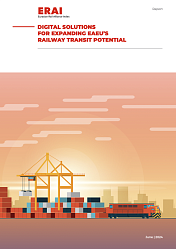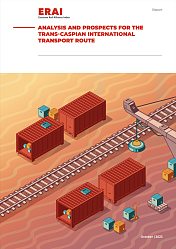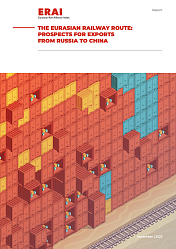The rapid development of trade relations between Russia and the countries of the Global South, particularly India, entails the need for the development of transport infrastructure and the organization of new cargo delivery routes
Analytics
Filters
Science and innovation
Source: Roscongress
Report
30.07.2024

Report
30.07.2024
Far from a one-off undertaking, the digital transformation is a continuous effort to adapt the transport infrastructure to the evolving technological capabilities and requirements.
Report
27.06.2024

Report
27.06.2024
In the face of changes in the international political situation, developing transport corridors in Eurasia has become a matter of vital importance.
Article
26.03.2024
The use of artificial intelligence technologies in the management of transportation processes, on all modes of transportation and within transport infrastructure, helps to create conditions for improved efficiency and the development of radically new areas of economic activity
Report
04.10.2023

Report
04.10.2023
The Trans-Caspian International Transport Route (TITR) runs through China, Kazakhstan, the Caspian Sea, Azerbaijan, Georgia, Turkey and further through the Black Sea to Europe. The TITR is a multimodal route that involves two modes of transport: rail and sea.
Report
29.12.2022

Report
29.12.2022
In 2022, the Russian transport administration faces unprecedented logistics challenges: massive trade restructuring prompted by restrictive sanctions has necessitated urgent operational decisions to combine different routes through friendly and neutral countries. The biggest changes are expected in cargo turnover with Russia’s largest trading partners — the European Union and China
Article
21.04.2022
UNECE and its subsidiary body, the UN Centre for Trade Facilitation and Electronic Business (UN/CEFACT) have finalized and published a set of aligned standards for the digitalization of intermodal transport data exchanges to support global supply chain cargo movements.







